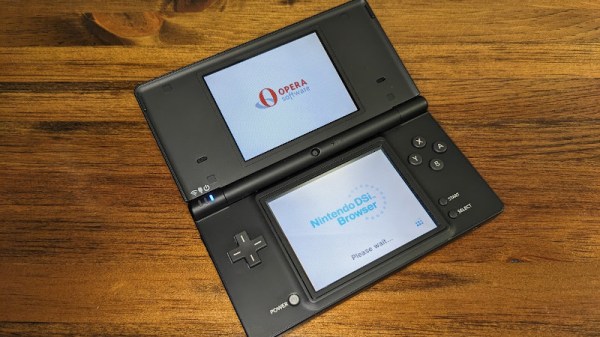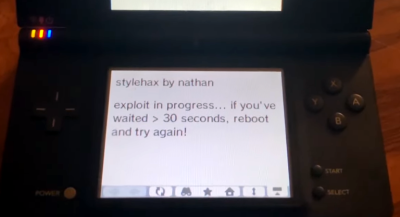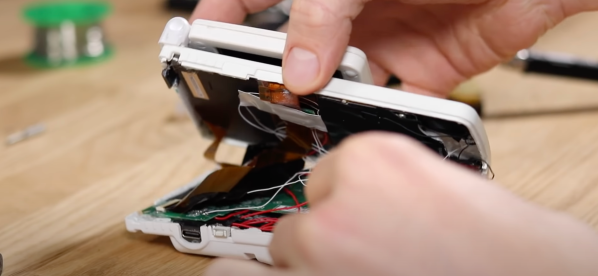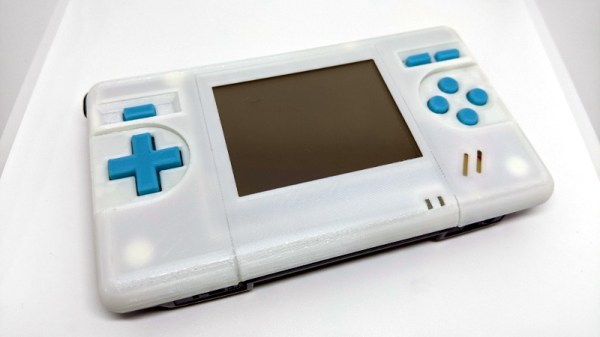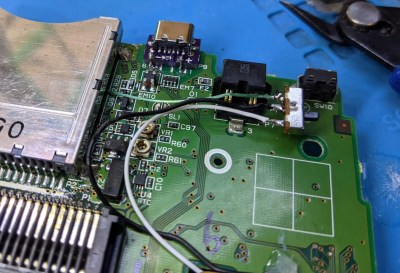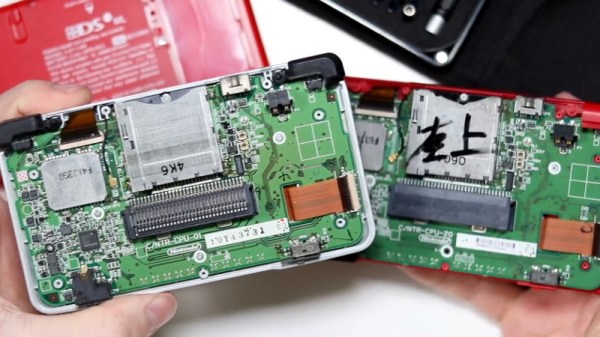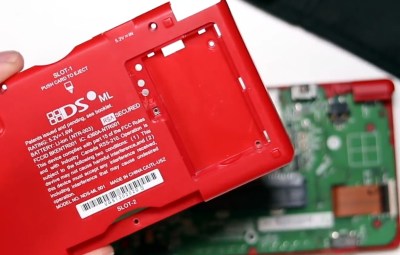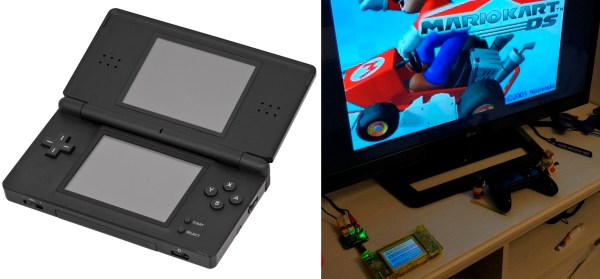Do you like Nintendo games? How about handhelds? Do you prefer the now-venerable Game Boy Advance (GBA) to more modern platforms, but wish your aging eyes could enjoy its content on a large CRT instead of a dinky LCD? If you answered yes to all those questions, you are exactly the type of person [GouldFish on Games] made this custom console for, and you should probably be friends.
 The external appearance of this hack is slick: a 3D printed console with the contours of the GBA in that iconic purple, but with a cartridge bay door like an NES and a SNES controller port. It’s the GBA console Nintendo never made, sitting next to a period-appropriate CRT. Playing GBA game on a CRT with an SNES controller is already hacky; what makes it really hacky is the guts are yet another Nintendo system — the DS Lite.
The external appearance of this hack is slick: a 3D printed console with the contours of the GBA in that iconic purple, but with a cartridge bay door like an NES and a SNES controller port. It’s the GBA console Nintendo never made, sitting next to a period-appropriate CRT. Playing GBA game on a CRT with an SNES controller is already hacky; what makes it really hacky is the guts are yet another Nintendo system — the DS Lite.
Why a DS Lite? Two reasons: one, it is cheaper to get a busted DS Lite than an old GBA mainboard. Two, as we covered before, the DS Lite can do composite-out with a relatively cheap add-on board. [GouldFish] really is hacking on the shoulders of giants, and they acknowledge it in the video. Aside from the composite-out board, he also makes use of community knowledge on how to make the DS Lite boot without screens or batteries.
Should you be interested in putting your own version of this console together, [GouldFish] was kind enough to share the STLs for the 3D printed enclosure, as well as the Gerber files for the custom PCB that interfaces with the SNES controller port.
We featured a CRT mod for an original Game Boy before, but this seems a lot more practical, if a lot less portable. [GouldFish] has no shortage of old titles and newer homebrew to chose from for this console, but they could always use more. We once featured a primer on how to get into the GBA homebrew scene, if you want to make a game.
Continue reading “The GBA Console You Never Knew You Wanted”



